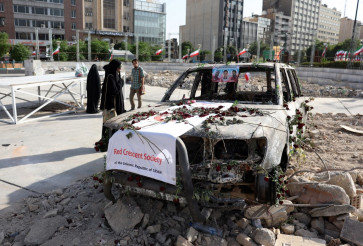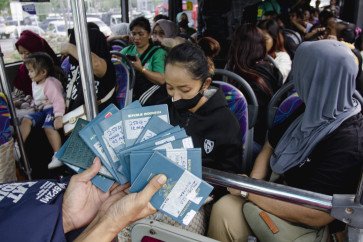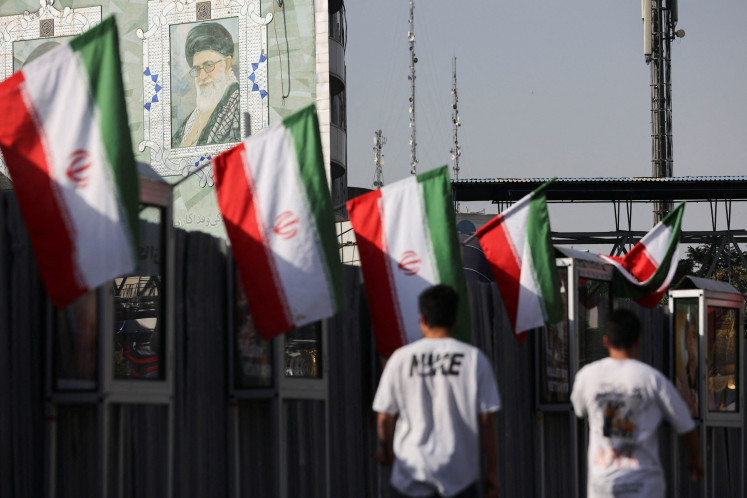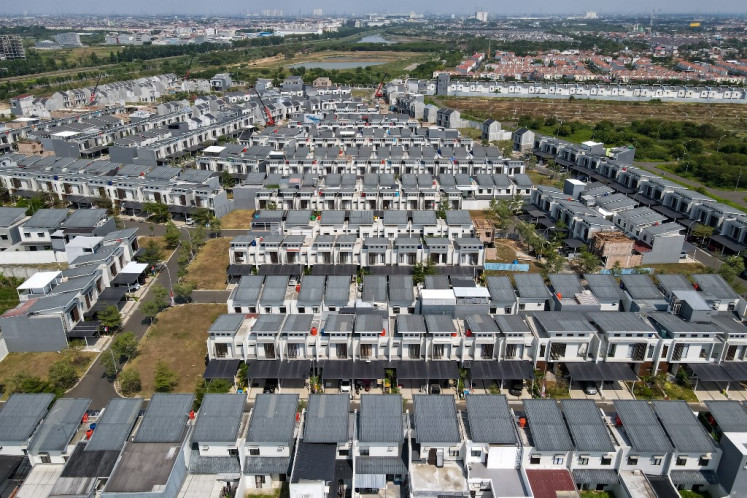Popular Reads
Top Results
Can't find what you're looking for?
View all search resultsPopular Reads
Top Results
Can't find what you're looking for?
View all search resultsU.S. researchers to seek mudflow, volcano link
Arizona State University (ASU) will establish a science research institute in Indonesia, with a forthcoming study on the mudflow disaster in Sidoarjo, East Java, as its initial project
Change text size
Gift Premium Articles
to Anyone

Arizona State University (ASU) will establish a science research institute in Indonesia, with a forthcoming study on the mudflow disaster in Sidoarjo, East Java, as its initial project.
A team of scientists, led by Dr. Amanda Clark from the ASU School of Earth and Space Exploration, will arrive Tuesday for the first project, expected to last one month, Susi Herawati, spokeswoman for the U.S. university, said Monday.
Dr. Clark's team will include Dannie Hidayat, an Indonesian geologist from Pennsylvania State University, and two experts from ASU, geochemist Hillary Hartnett and active tectonics and subsidence expert Ramon Arrowsmith.
The team first visited Sidoarjo in February to conduct a preliminary exploration of the mudflow site, which has spread into 11 surrounding villages since the disaster struck in May 2006.
The preliminary exploration focused on finding a link between the mud disaster and a number of active volcanoes in the province. The experts believe the mudflow is similar to regular lava volcanoes, except it erupted from beneath the earth rather than from mountains.
Susi said the government's Sidoarjo Mudflow Mitigation Agency has helped facilitate the ASU research and the university sought to establish a long-term arrangement with the government to conduct similar research in Indonesia.
She said they had yet to determine a site to establish the research institute and would focus first on the mudflow research.
Experts are divided on the cause of the disaster. Some claim the two-year mudflow is a natural phenomenon and others believe it is the result of mining activities by Lapindo Brantas Inc.
Lapindo Brantas Inc. is owned by the family of Coordinating Minister for the People's Welfare Aburizal Bakrie.
Rudi Rubiantoro, a petroleum engineer from the Bandung Institute of Technology's Research Affiliation Body, said last year the sole cause of the disaster was a drilling mistake by Lapindo.
His findings came around the same time as a publication by scientists from the Agency for the Assessment and Application of Technology, which said the mudflow was caused by natural tectonic activity and would have occurred with or without the drilling.
The mudflow has affected more than 10,000 families, who have been waiting for compensation money amounting to Rp 700 billion (US$76.9 million) from the government.
Hundreds of mudflow victims blockaded the alternative road connecting Surabaya and Sidoarjo on Monday to protest Lapindo's plan to stop the daily meal allowance for around 3,000 displaced people as of May 1.
The demonstration began at 10 a.m., by which time dozens of police had arrived to prevent the protesters from blocking the main road.
Deputy Regent Saiful Illah arrived later to appease and negotiate with the protesters. No agreement was reached, but Saiful promised to facilitate another meeting to settle the dispute.
The protesters dispersed peacefully after the dialogue.









